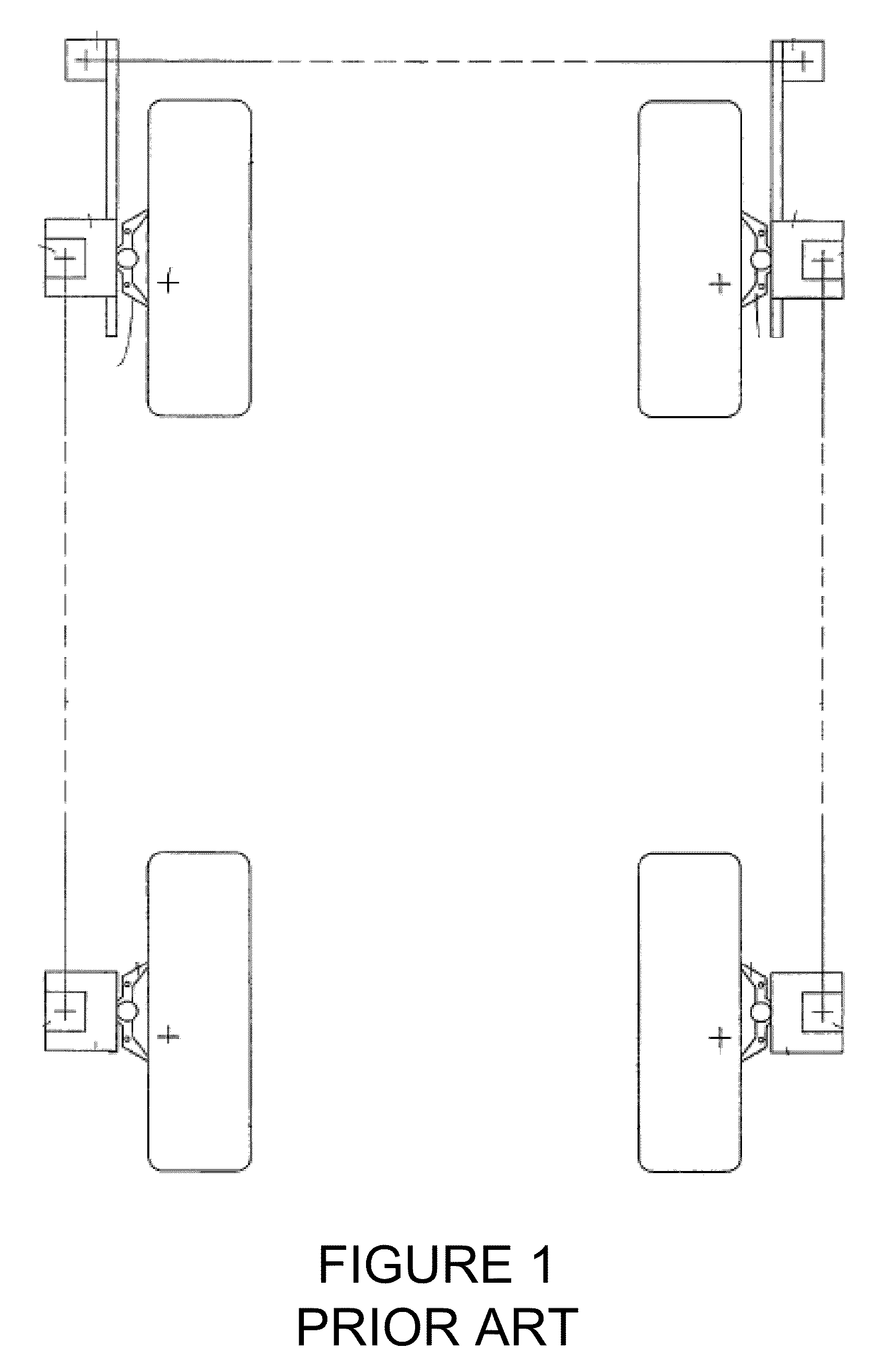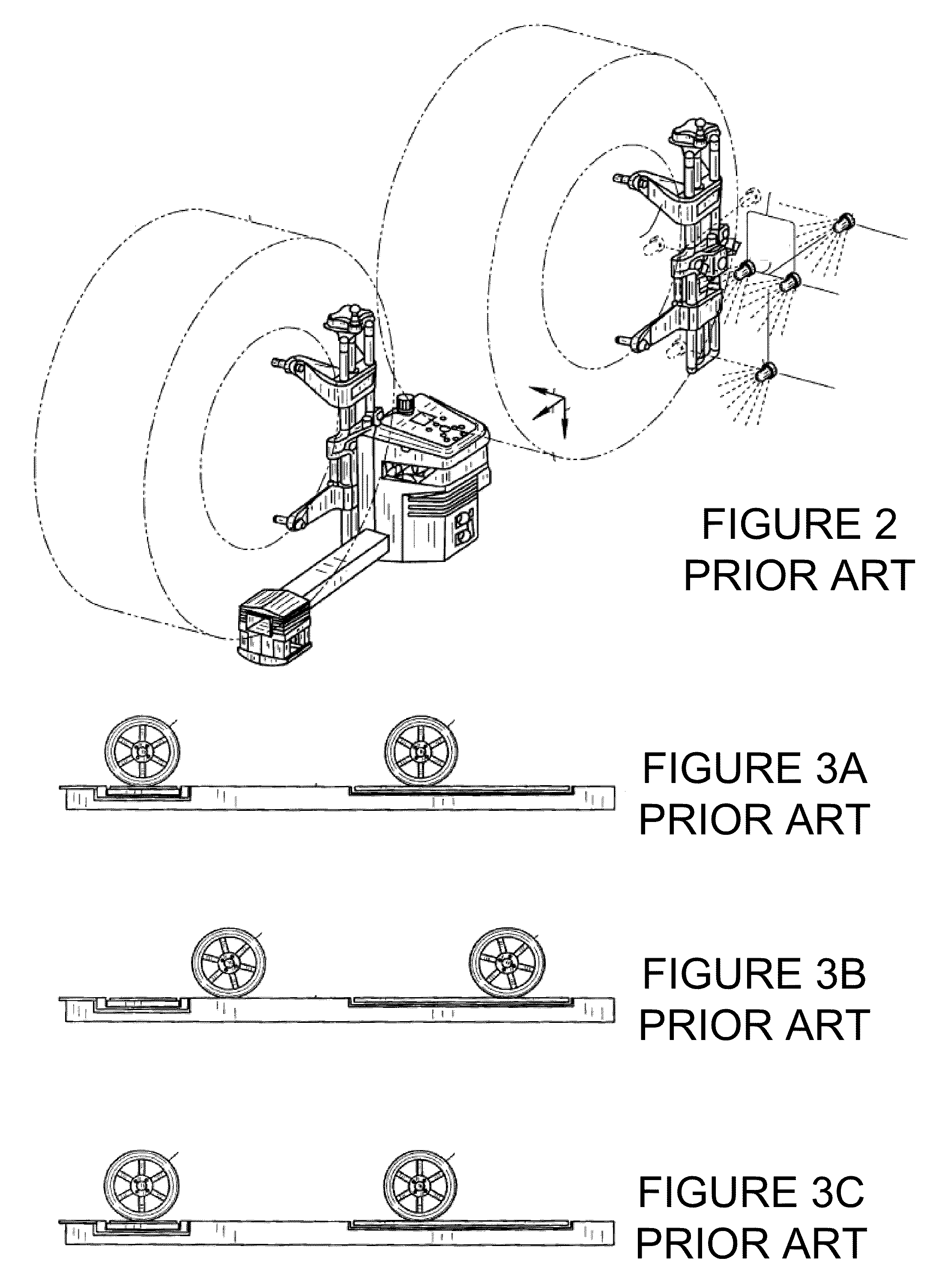Method for rolling compensation with wheel-mounted sensors
a technology of rolling compensation and sensors, which is applied in the direction of measurement devices, instruments, structural/machine measurement, etc., can solve the problems of erroneous readings, high cost of methods, and introduction of errors for both the car manufacturer and the alignment equipment manufacturer
- Summary
- Abstract
- Description
- Claims
- Application Information
AI Technical Summary
Benefits of technology
Problems solved by technology
Method used
Image
Examples
Embodiment Construction
[0027]The following detailed description illustrates the invention by way of example and not by way of limitation. The description enables one skilled in the art to make and use the present disclosure, and describes several embodiments, adaptations, variations, alternatives, and uses of the present disclosure, including what is presently believed to be the best mode of carrying out the present disclosure.
[0028]The present disclosure provides a method for compensating axial misalignment between active, wheel-mounted alignment sensors and an axis of rotation for a wheel on which the sensor is mounted by obtaining sensor readings over a wheel rotational arc of less than 180 degrees, and preferably over an arc of 60 degrees or less, such as shown in FIGS. 5A and 5B. The typical active wheel-mounted alignment sensor incorporates at least a wheel rotation encoder, a camber angle transducer, and a toe angle transducer, and freely rotates about an axis of rotation as the wheel is rotated, m...
PUM
 Login to View More
Login to View More Abstract
Description
Claims
Application Information
 Login to View More
Login to View More - R&D
- Intellectual Property
- Life Sciences
- Materials
- Tech Scout
- Unparalleled Data Quality
- Higher Quality Content
- 60% Fewer Hallucinations
Browse by: Latest US Patents, China's latest patents, Technical Efficacy Thesaurus, Application Domain, Technology Topic, Popular Technical Reports.
© 2025 PatSnap. All rights reserved.Legal|Privacy policy|Modern Slavery Act Transparency Statement|Sitemap|About US| Contact US: help@patsnap.com



